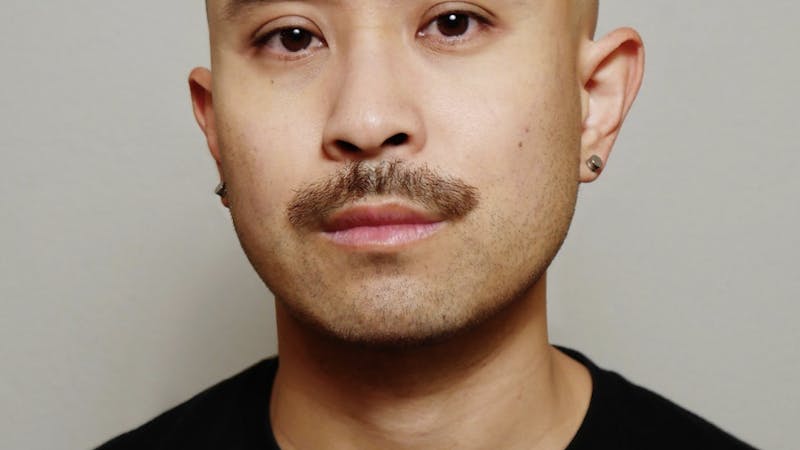Rice Centennial Campaign exceeds $1 billion
Projects for student development were and will be funded thanks to Rice University's Centennial Campaign exceeding its fundraising goal of $1 billion.
According to Vice President of Resource Development Darrow Zeidenstein, the campaign received more than 200,00 gifts from nearly 50,000 donors.
Zeidenstein said the campaign was launched was to raise financial resources to begin implementation of President David Leebron's Vision for the Second Century and rally the entire Rice community around the university's ambitions.
"A campaign's more than just raising money," Zeidenstein said. "It's about getting people involved. It's about bringing them to campus as we did during the Centennial ... to instill a sense of pride and engagement with the campaign. A campaign is a campaign not just to mobilize resources, but to mobilize people, and people's energy and excitement as well."
The money raised in the campaign has had both an immediate and long term impact and has mainly raised the university's gain in three areas - student support, research and community outreach, according to Zeidenstein.
Some of the raised money was gifted, such as to the Rice Annual Fund, and was made, given, and spent that year, whereas some of the money that was committed, paid or not, is restricted by what the donor wants to see happen, Zeidenstein said.
"During the whole campaign, about 56 million dollars came into the university through the Rice Annual Fund for Student Life and Learning," Zeidenstein said. "That was money that was used to help support budgets for the residential colleges, to support our need-blind admissions program, for [the] library and [for] other kinds of student support activities, and I think [it] made a big difference to why Rice [is] No. 1 [in] student quality of life right now in the Princeton Review."
Additionally, Zeidenstein said the campaign funded 28 endowed chairs.
"That is 28 endowments that supports keeping the best faculty here and bringing really great professors to campus," Zeidenstein said. "Not all those chairs have been fully funded and not all the professors have come, but a good number have [already], and that means more course offerings, better faculty, better academic reputation, etc. The impact on that is immediate for students now, [and] because their reputation is excellent in research and teaching, [there's] going to be a long-term benefit from the campaign."
Programs funded by the campaign money include the Chao Center for Asian Studies and the OpenStax College, a Rice initiative led by Richard G. Baranuik, the Victor E. Cameron Professor in Engineering, to make free 25 textbooks from the 25 fields that make up 80 percent of the textbook market, Zeidenstein said.
"[The campaign] raised ... millions to actually either acquire the rights to really good textbooks, or to contract with leading professors and faculty members who write these textbooks," Zeidenstein said. "We pay them a good amount of money, they write really excellent textbooks, and they're put up online ... you can download [them] from iTunes for like three bucks, or you can download right into an HTML browser for free at openstaxcollege.org."
There are also a number of brand-new programs funded by donors, Zeidenstein said, including a doctoral program in art history, the only degree of its kind offered in Houston.
Zeidenstein said art initiatives funded by donor money do not take away from scholarships or direct student support.
"I think it's really important that you don't set it up as a trade-off between students on one hand and beautiful art," Zeidenstein said. "People, above and beyond what they were already doing for the university, in terms of research and student support, also wanted to add beauty to the campus, and they did it through their giving."
Zeidenstein said he hopes people will realize philanthropy is necessary for the university, especially for student life.
"I worry that people will think, 'Oh fundraising is just about these really big buildings and nice-looking art, so it's only about the colleges, the rec center, and these big sculptures' ... because that's what people see," Zeidenstein said. "But if you remove from the campus everything that is either currently supported by philanthropy in the form of permanent endowment or has been created because of philanthropy, the university would not be number one in student quality of life. I don't think it'd even break the top 50 ... Student life would be pretty barren and not nearly as rich if you took away philanthropy."
The post-campaign goal is to continue to engage people in the life of the university, even if they aren't alumni, Zeidenstein said, so that they will be willing to support any future initiatives.
Rice University President David Leebron said he thinks the campaign's success should give everyone a great feeling of optimism as Rice's second century begins.
"With a university our size to exceed a goal that was higher than we were advised could be achieved, in the economic climate we faced, is just a tremendous testimony to the support of our alumni, our friends and the people of Houston," Leebron said. "We ought to all take pride that we've created and sustained a university that attracts that kind of support. Per person basis... this is one of the most successful university campaigns. This is what it takes to sustain the success of a university like ours. We could not continue to have the success we have had without this kind of support."
Martel College sophomore Jenna Netland said she thinks that if the campaign money is used correctly, it can have a very positive impact on education at Rice.
"Obviously there are a lot of things that people will come here for, like the residential college system and the atmosphere, but the main thing is to get that good education," Netland said. "I think that having funds to improve Rice's staff and to improve the way that we can teach students in the classroom is always going to be a wonderful thing for the university as a whole."
More from The Rice Thresher

Andrew Thomas Huang puts visuals and identity to song
Houston is welcoming the Grammy-nominated figure behind the music videos of Björk and FKA twigs on June 27.

Live it up this summer with these Houston shows
Staying in Houston this summer and wondering how to make the most of your time? Fortunately, you're in luck, there's no shortage of amazing shows and performances happening around the city. From live music to ballet and everything in between, here are some events coming up this month and next!

Review: 'Adults' couldn’t have matured better
Sitcoms are back, and they’re actually funny. FX’s “Adults” is an original comedy following a friend group navigating New York and what it means to be an “actual adult.” From ever-mounting medical bills to chaotic dinner parties, the group attempts to tackle this new stage of life together, only to be met with varying levels of success.

Please note All comments are eligible for publication by The Rice Thresher.